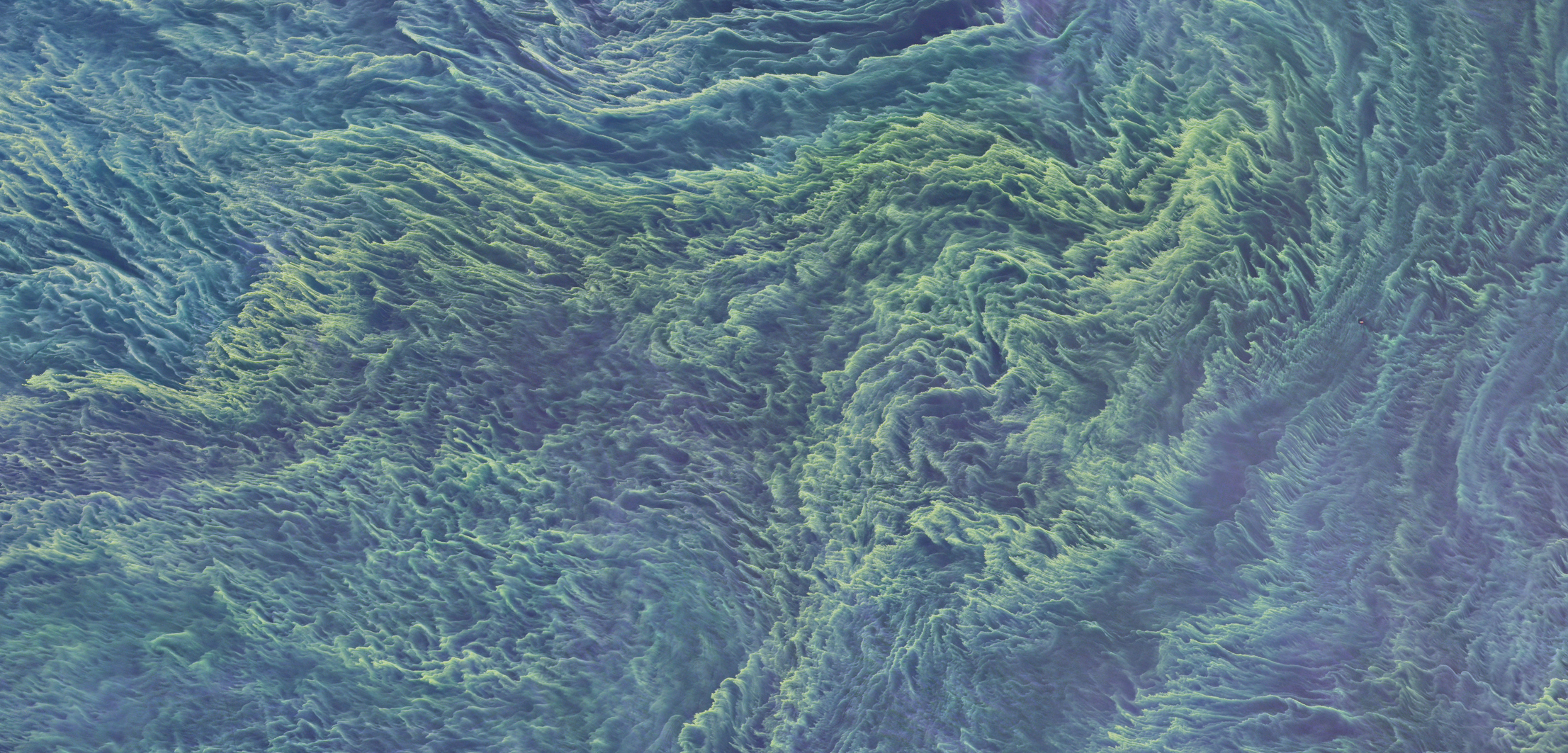Stories from the Seven Seas
A weekly roundup of coastal news.
Article body copy
Hakai Magazine is all about the coast, but other outlets sometimes share our fascination. Every week on Strand we collect our favorite coastal stories from around the web.
A beautiful, potentially toxic event is ‘carpeting’ the Baltic Sea
by Dave Mosher for Tech Insider
“NASA suggests the bloom might contain cyanobacteria. The marine bacteria are big oxygen producers but can threaten wildlife if they grow out of control. Some species can also be toxic and threaten the food supply. What’s more, cruise ships full of summer tourists might be inadvertently feeding the blooms.”
Hawaii first to harness deep ocean temperatures for power
by Malavika Vyawahare for ClimateWire
“Hawaii, which is heavily dependent on imported fossil fuels to meet its energy demand, might indeed have to look toward the ocean to meet its ambitious target of having 100 percent renewable energy by 2045. ‘This plant provides a much-needed test bed to commercialize ocean thermal energy conversion technology and bolster innovation,’ Hawaii Gov. David Ige said in a statement.”
This legendary deep-sea fish sighting continues to be debated after 60 years
by Zach St. George for Nautilus
“Even knowing what kind of fish you want to catch, where and when to find said fish, and what kind of bait it likes to eat, you’re always working by feel. Line and hook or nets serve as surrogate fingers, groping their way through an unseen world, and until they break the surface and the fist is opened, there is no way of knowing exactly what was grabbed. At risk of mixing metaphors, what I’m trying to say is that there’s always the chance of catching a clam. It’s what makes fishing fun, and it’s also a good way to think about the story of the world’s deepest fish, a fish that probably wasn’t a fish at all.”
Watch: humpback soars through the fog in this surprise close encounter
by Earth Touch
“‘I started whale watching in 1984 with my husband Roy when he was alive and never before have I captured a whale in that position. What a show that whale was putting on. It was just non stop,’ she said.”
Incredible tails of amazing whales
by Joe Hanson for It’s Okay To Be Smart
Walter Munk, the ‘Einstein of the oceans’
by Kate Galbraith for the New York Times
“In 1942, with World War II in full swing, a young military scientist learned of the Allies’ plans to invade northwestern Africa by sea to dislodge the nearby Axis forces.
The scientist, Walter Munk, who was in his mid-20s, hastily did some research and found that waves in the region were often too high for the boats carrying troops to reach the beaches safely. Disaster could loom. He mentioned it to his commanding officer, but was brushed off.
‘‘They must have thought about that,’’ Dr. Munk, now 97, recalled being told. But the young scientist persisted, calling in his mentor at the Scripps Institution of Oceanography to help.
They devised a way to calculate the waves the boats could expect to face. Their work helped the boats land in a window of relative calm, and the science of wave prediction took off, becoming part of the planning for the D-Day landings in 1944.”

